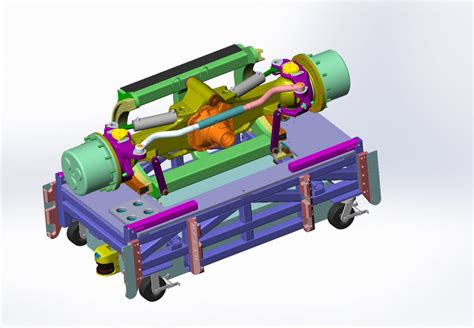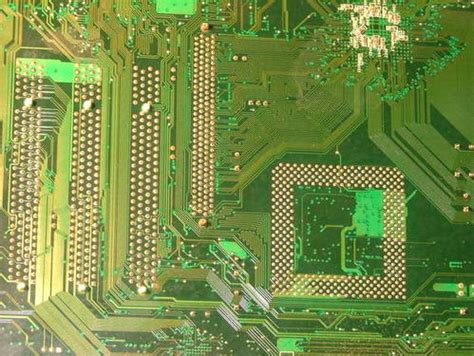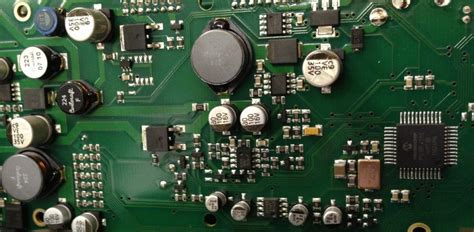Types of Printed Circuit Boards (PCBs): A Comprehensive Overview
Printed Circuit Boards (PCBs) are the backbone of modern electronics. They provide the mechanical support and electrical connections necessary for electronic components to function as intended. PCBs are used in virtually every electronic device, from smartphones and computers to industrial machinery and medical equipment. Over the years, the design and manufacturing of PCBs have evolved significantly, leading to the development of various types of PCBs tailored to specific applications. This article explores the different types of PCBs, their characteristics, and their applications.
1. Single-Sided PCBs
Single-sided PCBs are the simplest and most basic type of printed circuit board. They consist of a single layer of substrate material, typically made of fiberglass or another non-conductive material, with a thin layer of conductive material, usually copper, on one side. The components are mounted on one side of the board, and the conductive traces are etched onto the opposite side.
Characteristics:
- Simplicity: Single-sided PCBs are easy to design and manufacture, making them cost-effective for simple applications.
- Limited Complexity: Due to the single layer of conductive material, the complexity of the circuit is limited. This type of PCB is not suitable for complex circuits with many components.
- Low Cost: The simplicity of the design and manufacturing process makes single-sided PCBs the most affordable option.
Applications:
Single-sided PCBs are commonly used in simple electronic devices such as calculators, power supplies, and LED lighting. They are also used in applications where cost is a primary concern, and the circuit complexity is low.

2. Double-Sided PCBs
Double-sided PCBs, as the name suggests, have conductive material on both sides of the substrate. This allows for more complex circuits compared to single-sided PCBs. The two layers of conductive material are connected using through-hole vias, which are small holes drilled through the board and plated with conductive material.
Characteristics:
- Increased Complexity: Double-sided PCBs can accommodate more components and more complex circuits than single-sided PCBs.
- Higher Cost: The additional layer of conductive material and the need for vias increase the cost compared to single-sided PCBs.
- Improved Performance: The ability to route traces on both sides of the board can lead to better performance in terms of signal integrity and power distribution.
Applications:
Double-sided PCBs are used in a wide range of applications, including consumer electronics, automotive systems, and industrial controls. They are suitable for devices that require more complex circuits than single-sided PCBs can provide but do not require the advanced capabilities of multi-layer PCBs.
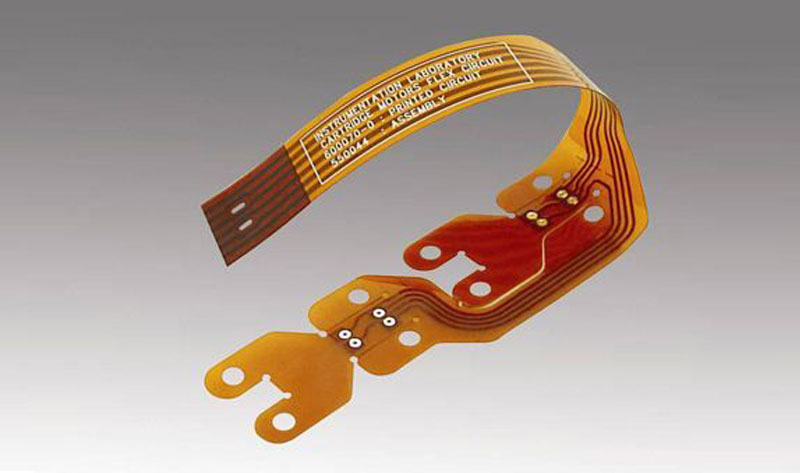
3. Multi-Layer PCBs
Multi-layer PCBs consist of three or more layers of conductive material, separated by insulating layers. The layers are interconnected using vias, which can be through-hole, blind, or buried. Multi-layer PCBs are used in applications where high circuit density and complex routing are required.
Characteristics:
- High Complexity: Multi-layer PCBs can support very complex circuits with a high density of components.
- Increased Cost: The additional layers and the complexity of the manufacturing process make multi-layer PCBs more expensive than single or double-sided PCBs.
- Improved Performance: Multi-layer PCBs offer better signal integrity, reduced electromagnetic interference (EMI), and improved power distribution compared to single or double-sided PCBs.
Applications:
Multi-layer PCBs are used in advanced electronic devices such as smartphones, computers, and telecommunications equipment. They are also used in aerospace, military, and medical applications where high reliability and performance are critical.
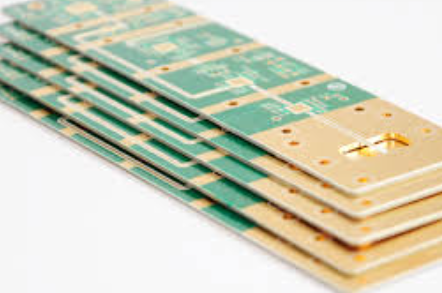
4. Rigid PCBs
Rigid PCBs are the most common type of PCB. They are made from a solid substrate material, typically fiberglass, which provides rigidity and durability. Rigid PCBs can be single-sided, double-sided, or multi-layer.
Characteristics:
- Durability: Rigid PCBs are strong and durable, making them suitable for applications where the board may be subjected to mechanical stress.
- Stability: The rigid substrate provides excellent dimensional stability, which is important for maintaining the alignment of components and traces.
- Limited Flexibility: As the name suggests, rigid PCBs cannot be bent or flexed, which limits their use in applications where flexibility is required.
Applications:
Rigid PCBs are used in a wide range of applications, including consumer electronics, automotive systems, and industrial controls. They are also used in devices where durability and stability are important, such as in military and aerospace applications.

5. Flexible PCBs
Flexible PCBs, also known as flex circuits, are made from flexible substrate materials such as polyimide or polyester. These materials allow the PCB to bend and flex, making them suitable for applications where the board needs to conform to a specific shape or fit into a tight space.
Characteristics:
- Flexibility: Flexible PCBs can be bent, twisted, or folded, making them ideal for applications where space is limited or where the board needs to move during operation.
- Lightweight: Flexible PCBs are typically lighter than rigid PCBs, which can be an advantage in weight-sensitive applications.
- Durability: Despite their flexibility, flexible PCBs are durable and can withstand repeated bending and flexing without breaking.
Applications:
Flexible PCBs are used in a variety of applications, including wearable electronics, medical devices, and automotive systems. They are also used in applications where the board needs to fit into a compact or irregularly shaped space, such as in cameras or mobile phones.
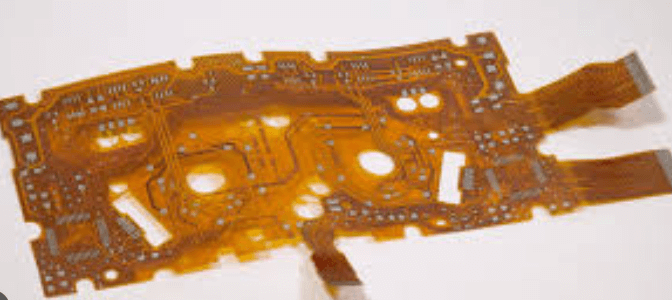
6. Rigid-Flex PCBs
Rigid-flex PCBs combine the best features of rigid and flexible PCBs. They consist of multiple layers of rigid and flexible substrates laminated together, with the rigid sections providing stability and the flexible sections allowing for bending and flexing.
Characteristics:
- Versatility: Rigid-flex PCBs offer the stability of rigid PCBs and the flexibility of flexible PCBs, making them suitable for a wide range of applications.
- Complexity: Rigid-flex PCBs can be highly complex, with multiple layers of rigid and flexible materials interconnected using vias.
- Cost: The complexity of the design and manufacturing process makes rigid-flex PCBs more expensive than rigid or flexible PCBs.
Applications:
Rigid-flex PCBs are used in applications where both stability and flexibility are required, such as in aerospace, military, and medical devices. They are also used in consumer electronics, where they can help reduce the size and weight of the device.
7. High-Frequency PCBs
High-frequency PCBs are designed to operate at high frequencies, typically above 1 GHz. They are used in applications such as RF (radio frequency) and microwave circuits, where signal integrity and minimal signal loss are critical.
Characteristics:
- Material Selection: High-frequency PCBs are made from specialized materials with low dielectric loss and high thermal stability, such as PTFE (polytetrafluoroethylene) or ceramic-filled laminates.
- Signal Integrity: High-frequency PCBs are designed to minimize signal loss and maintain signal integrity at high frequencies.
- Cost: The specialized materials and design considerations make high-frequency PCBs more expensive than standard PCBs.
Applications:
High-frequency PCBs are used in applications such as wireless communications, satellite systems, and radar systems. They are also used in high-speed digital circuits, where signal integrity is critical.
8. Aluminum-Backed PCBs
Aluminum-backed PCBs, also known as metal-core PCBs, are a type of PCB that uses an aluminum substrate instead of the traditional fiberglass substrate. The aluminum substrate provides excellent thermal conductivity, making these PCBs ideal for applications where heat dissipation is a concern.
Characteristics:
- Thermal Management: Aluminum-backed PCBs are designed to dissipate heat efficiently, making them suitable for high-power applications.
- Durability: The aluminum substrate provides additional strength and durability, making these PCBs more resistant to mechanical stress.
- Cost: The use of aluminum as a substrate increases the cost compared to standard PCBs.
Applications:
Aluminum-backed PCBs are used in applications where heat dissipation is critical, such as in LED lighting, power supplies, and automotive systems. They are also used in high-power electronic devices, where efficient thermal management is essential.
9. HDI PCBs
HDI (High-Density Interconnect) PCBs are a type of PCB that offers higher wiring density than traditional PCBs. They are characterized by the use of microvias, fine lines, and high-performance thin materials, which allow for more complex and compact designs.
Characteristics:
- High Density: HDI PCBs can accommodate a higher number of components and more complex circuits in a smaller area.
- Improved Performance: The use of microvias and fine lines can improve signal integrity and reduce signal loss.
- Cost: The advanced manufacturing techniques required for HDI PCBs make them more expensive than standard PCBs.
Applications:
HDI PCBs are used in applications where space is limited and high performance is required, such as in smartphones, tablets, and other portable electronic devices. They are also used in medical devices and aerospace applications, where compact and reliable designs are essential.

10. Ceramic PCBs
Ceramic PCBs are a type of PCB that uses ceramic materials, such as alumina or aluminum nitride, as the substrate. These materials offer excellent thermal conductivity, high mechanical strength, and good electrical insulation.
Characteristics:
- Thermal Management: Ceramic PCBs are highly effective at dissipating heat, making them suitable for high-power and high-temperature applications.
- Durability: Ceramic materials are highly durable and resistant to wear and tear, making these PCBs suitable for harsh environments.
- Cost: The use of ceramic materials and the specialized manufacturing process make ceramic PCBs more expensive than standard PCBs.
Applications:
Ceramic PCBs are used in applications where high thermal conductivity and durability are required, such as in power electronics, LED lighting, and automotive systems. They are also used in high-temperature applications, such as in aerospace and industrial equipment.
Conclusion
The world of PCBs is diverse and constantly evolving, with new types of PCBs being developed to meet the demands of increasingly complex and sophisticated electronic devices. From the simplicity of single-sided PCBs to the advanced capabilities of HDI and ceramic PCBs, each type of PCB offers unique characteristics that make it suitable for specific applications. Understanding the different types of PCBs and their capabilities is essential for designing and manufacturing electronic devices that meet the needs of today’s technology-driven world. Whether you’re working on a simple consumer device or a complex aerospace system, choosing the right type of PCB is crucial to ensuring the success of your project.



